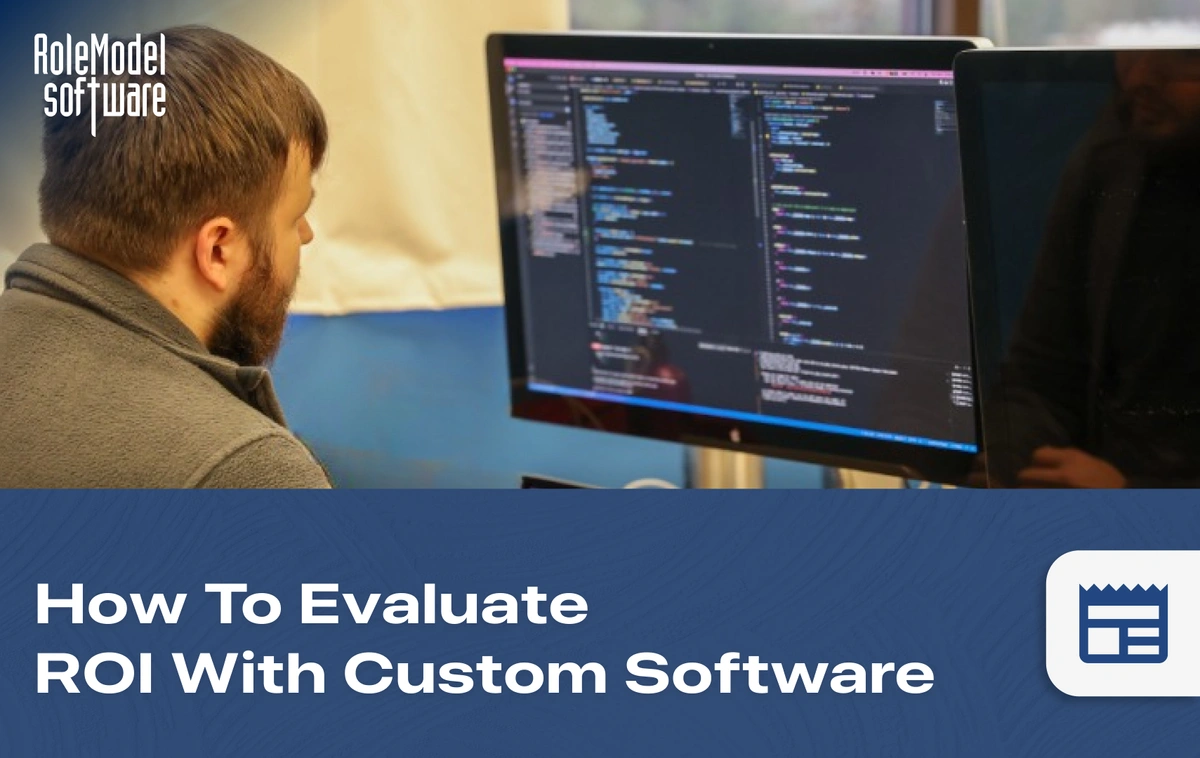•May 09, 2024

As someone considering a custom software project, you’re probably asking yourself, “How do I quantify an investment in custom software?” With off-the-shelf software it’s all pretty well known when it comes to features, cost, and potential value. However, with custom software, you’re starting with something that does not yet exist. So, how do you quantify the value of software that hasn't been created yet?
We want to examine three key ideas: an investment mindset, business value drivers, and iterative value. Taken together, these help you evaluate whether custom software is the right investment for your business.
Custom software should be approached from an investment mindset. You shouldn’t think about custom software as a one-time fee that you are paying to unlock a piece of software. It is really an investment in a long-term, sustainable asset for your business. You are not just thinking about the upfront cost but also the vision of where you want to take your business. What’s the long-term opportunity that custom software provides? Off-the-shelf software is something you have to integrate into your business, whereas custom software is something that you can build to fit your business and your competitive advantage. What’s the way you work? What’s unique to your business? That can become the hub—the integration point that accelerates your growth and ability to scale beyond where you are at right now.
Having the right mindset doesn’t mean that you have to hope and pray that custom software is going to bring value to your business. Hope is not a strategy. But there are unique value drivers within your business that you can focus on, analyze, and determine what return you would get on solving those within your business.
For example, on the cost reduction side, you can consider the monetary value of:
having fewer people involved with a process—that can dramatically decrease labor costs
increasing estimation accuracy, which can decrease material wastage
On the revenue-enhancing side, you want to think about:
Getting to market faster
Improving customer experience and retention
Engaging potential customers more effectively (including selling productivity)
If you focus on factors like that, you can pretty quickly get to a quantified business case for the software that you are considering.
In addition to the directly quantifiable value that custom software can bring to your business, it’s also important to consider intangibles such as:
brand professionalism
company culture
the overall happiness and well-being of your employees
software as an additional asset that can impact a company's evaluation
Intangibles like these could be an additional point of value for your custom software project.
You know your business and can identify the pieces of value that fit with your vision. That analysis and quantification shape the investment that you make with custom software, yielding you the highest return.
Custom software opens a lot of possibilities. But how do you narrow the focus to what’s going to be most valuable for your business? Where can you get the biggest return for the smallest investment? Start small with a key workflow or part of the business that would bring immediate value. And then use the returns from that investment to further invest in the long-term vision for what you have with your software. This is Iterative Value.
You want to start small and release software frequently to reduce the risk of your investment. At the same time, you want to get to value as quickly as possible because money today is worth more than money tomorrow.
Iterative value de-risks your investment, meaning that you don’t have to go 0-100 before you get value. Instead, you can start small. This might look like a skateboard that addresses your basic needs and functionality and can evolve into a bicycle and, ultimately, the car that you need as a business. This means that every step of the way, you are getting tangible value.
By incrementally building your software asset, you address your needs now but set a path for achieving your long-term goals. This scalable agility allows you to grow your business beyond simple linear growth and adapt to changing business needs and market conditions.
When considering your return on investment for software, you can look at a product, and ultimately, that will only ever be what you purchase. Versus custom software that unlocks the potential of a future. You start small and can grow your investment over time and you control your solution. This is an unbounded opportunity that custom software unlocks.
When considering ROI, it’s important to have:
an investment mindset focused not just on the cost but on the opportunities
key business value drivers that identify the impact that this software would have
an iterative value approach where you start small and build toward your long-term vision
You have the tools to evaluate the return on investment in custom software for your business. At RoleModel, we want to be a resource; we’d love to discuss these ideas with you further or help you determine whether custom software investment makes sense for your business.